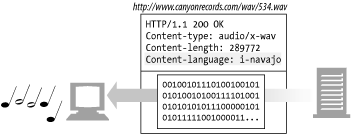Language Tags and HTTP
Language tags are short, standardized strings that name spoken languages.
We need standardized names, or some people will tag French documents as “French,” others will use “Français,” others still might use “France,” and lazy people might just use “Fra” or “F.” Standardized language tags avoid this confusion.
There are language tags for English (en), German (de), Korean (ko), and many other languages. Language tags can describe regional variants and dialects of languages, such as Brazilian Portuguese (pt-BR), U.S. English (en-US), and Hunan Chinese (zh-xiang). There is even a standard language tag for Klingon (i-klingon)!
The Content-Language Header
The Content-Language entity header field describes the target audience languages for the entity. If the content is intended primarily for a French audience, the Content-Language header field would contain:
Content-Language: fr
The Content-Language header isn’t limited to text documents. Audio clips, movies, and applications might all be intended for a particular language audience. Any media type that is targeted to particular language audiences can have a Content-Language header. In Figure 16-8, the audio file is tagged for a Navajo audience.

Figure 16-8. Content-Language header marks a “Rain Song” audio clip for Navajo speakers
If the content is intended for multiple audiences, you can list multiple languages. As ...
Get HTTP: The Definitive Guide now with the O’Reilly learning platform.
O’Reilly members experience books, live events, courses curated by job role, and more from O’Reilly and nearly 200 top publishers.

